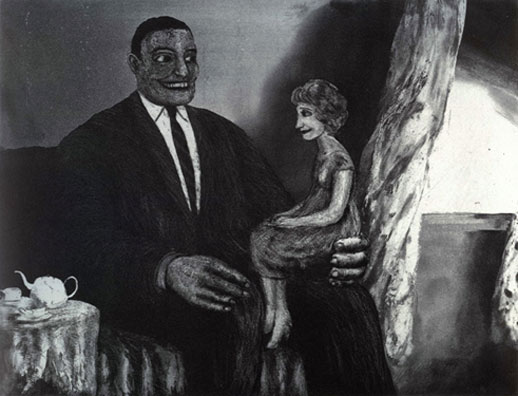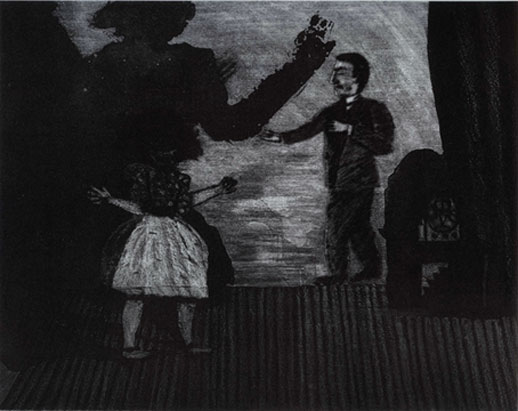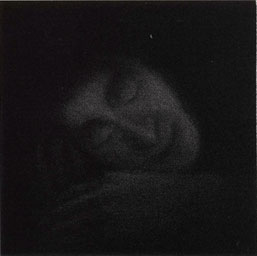Looming Shadows and Obscured Faces
A native of Wales who settled in Paris in 1968 to study drawing and engraving, Richard Davies produced mostly black and white prints, nineteen of which are now on display at Gallery Fukka in Jimbocho. Most were created during the twelve years before his death in 1991, and well before the art world seems to have paid him much notice. There have been several exhibitions of Davies’ engravings in Japan during the last decade, as well as in Paris, most recently at the National Library, but a diagnosis of HIV in 1986 meant the artist would never enjoy the attention his oddly expressive prints have justifiably received. With the exception of one print that has been ungraciously hung above a sink, this is a well-presented show in the clean, bright space of Gallery Fukka, and a welcome chance to discover this little-known artist.

Like the German Expressionists who influenced him, Davies used distortion and enlargement, looming shadows and obscured faces, to great emotional effect. This is most obvious in his depictions of huge, dark smiling men cavorting with tiny, white-clad smiling women. In one, a woman dances the tango with her partner towering above her, while in another a woman sits on a man’s huge knee, his hand under her bottom, a tray holding a teapot and two cups placed nearby. This last detail might be related to the print’s title, Une Romance Anglaise (An English Romance,) but the image is not particularly romantic. However, in spite of the man’s giant-like appearance and outsized smile, it is not exactly foreboding either. Like much of Davies’ work, there is humanity and tenderness in the embraces, but also a palpable loneliness. One wonders if one of the two figures is not merely a figment of the other’s imagination, the tableau a snapshot of a dream.

Davies drew inspiration from the life of busy city streets and circuses, as the German Expressionist did before him. His more intimate works, however, are the most affecting, such as that of a couple sitting across a table from one another, hands close but not touching, a ghostly figure standing in the shadows beside them. In 1980s Je Dance pour Toi mon Amant des Rêves, (I Dance for You, My Dream Lover), a man dances beside a radio, a grave look upon his face, while a girl, her back to the viewer, creates a monstrous shadow on the wall beside him. Again one wonders, who is the dream?

A. S. Feinberg
A. S. Feinberg



